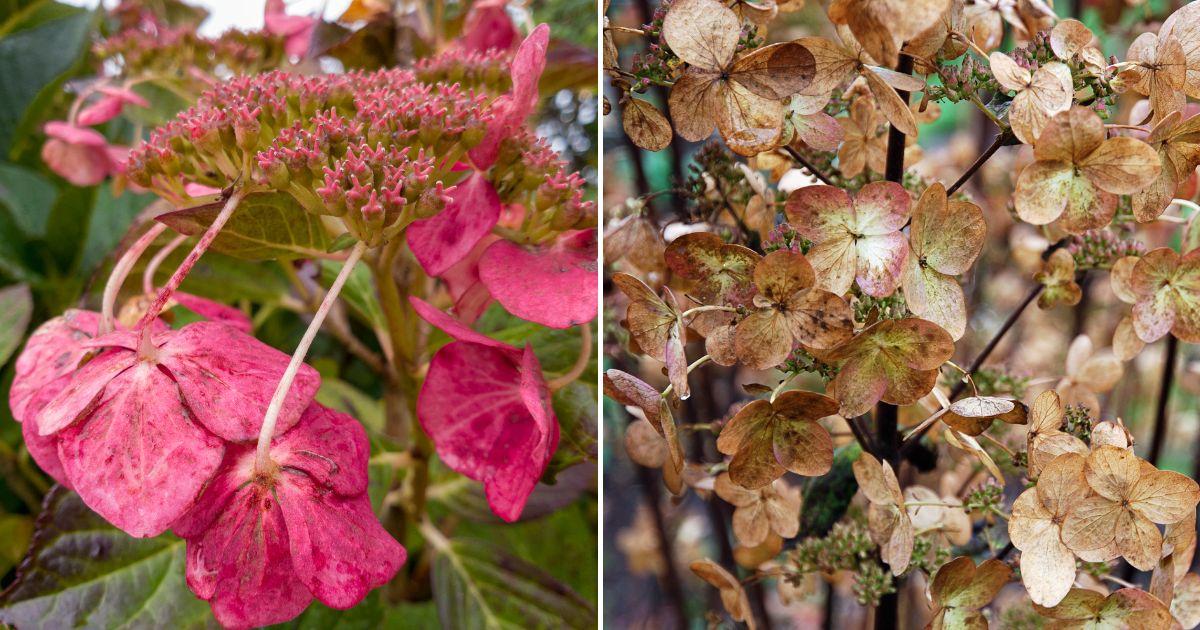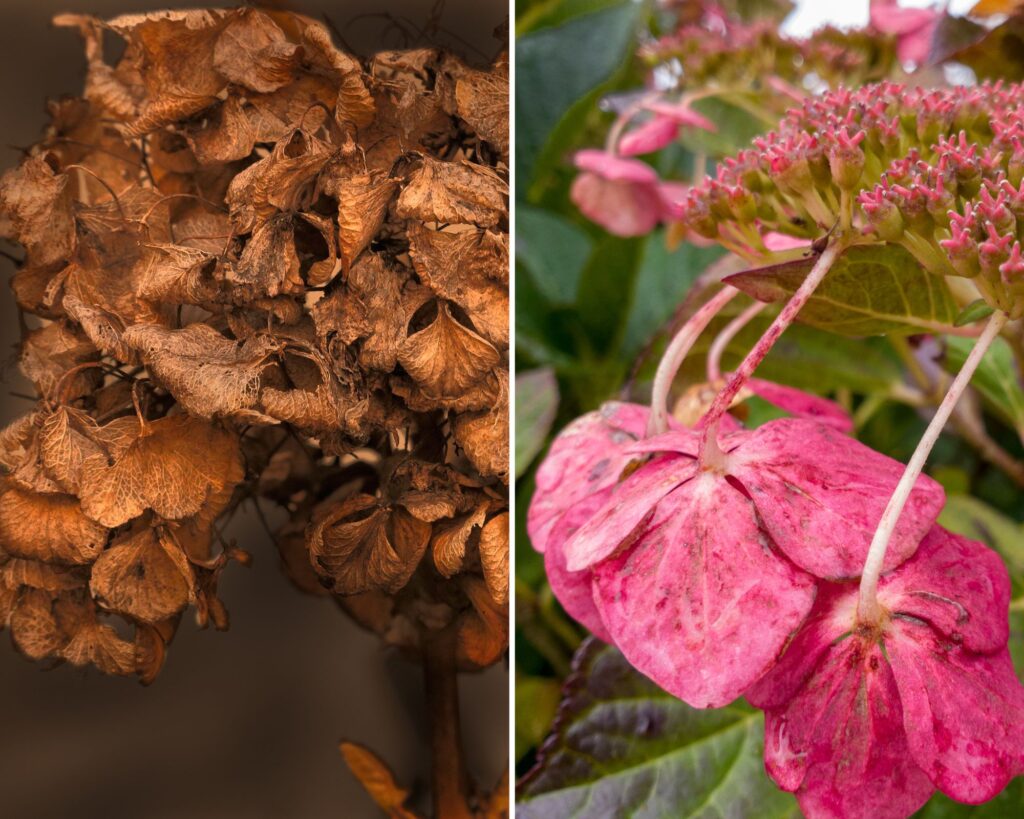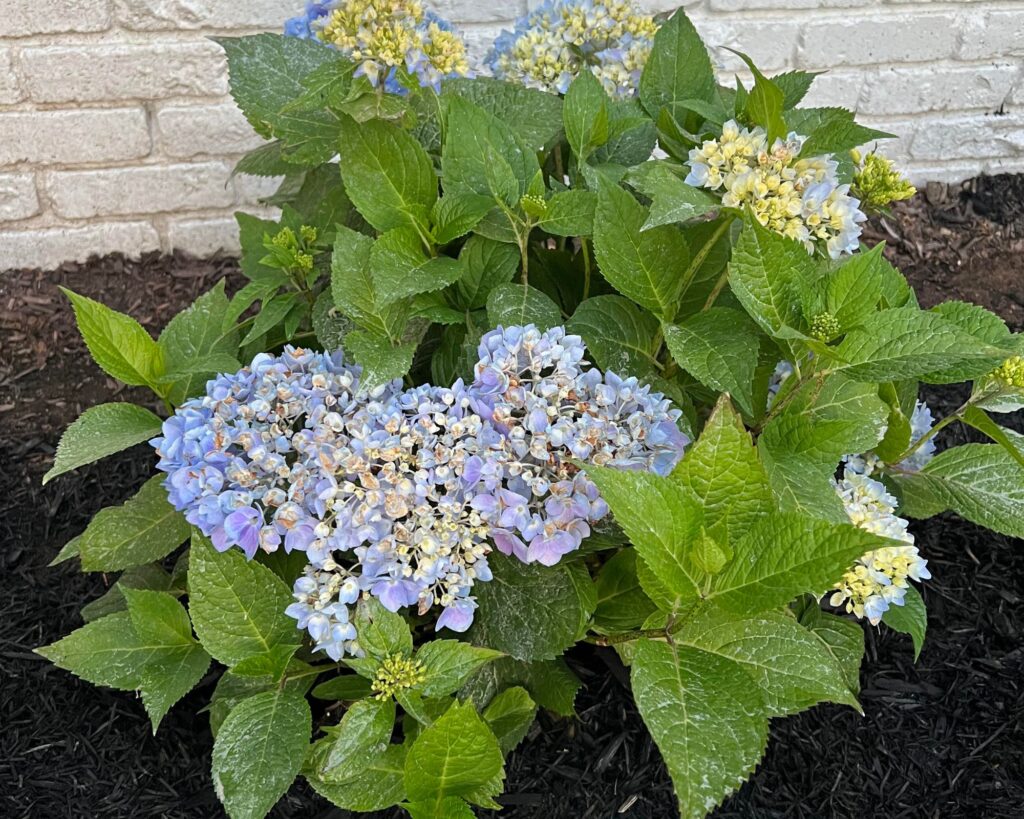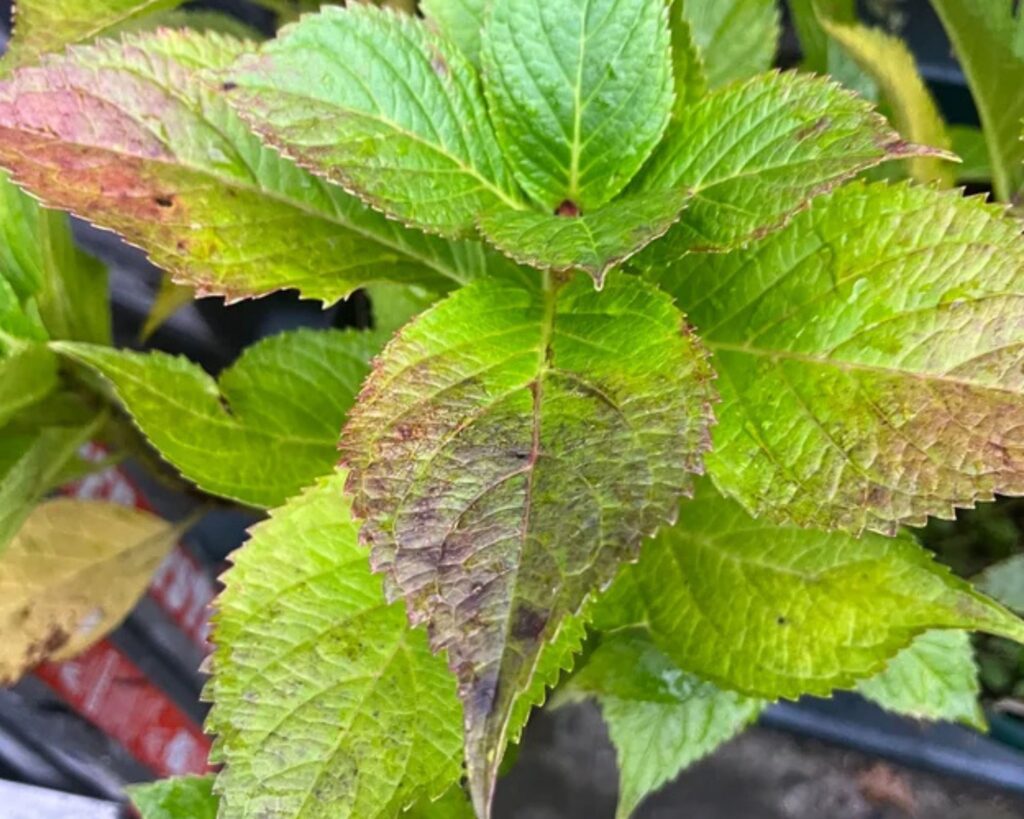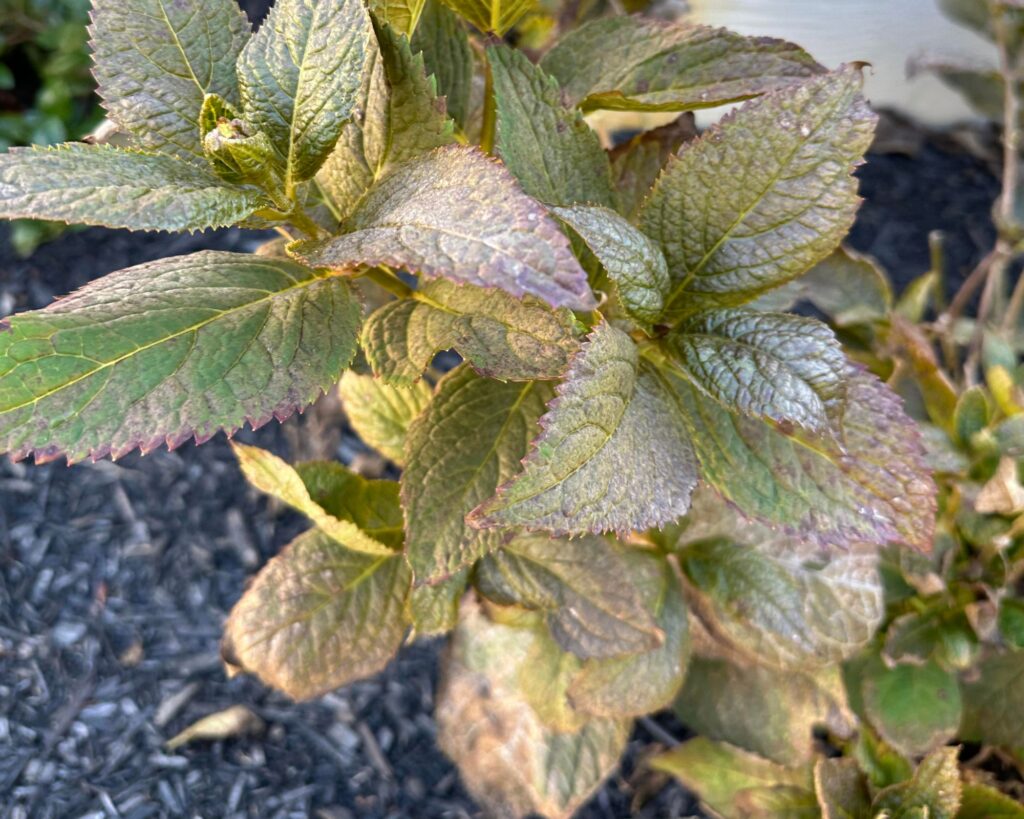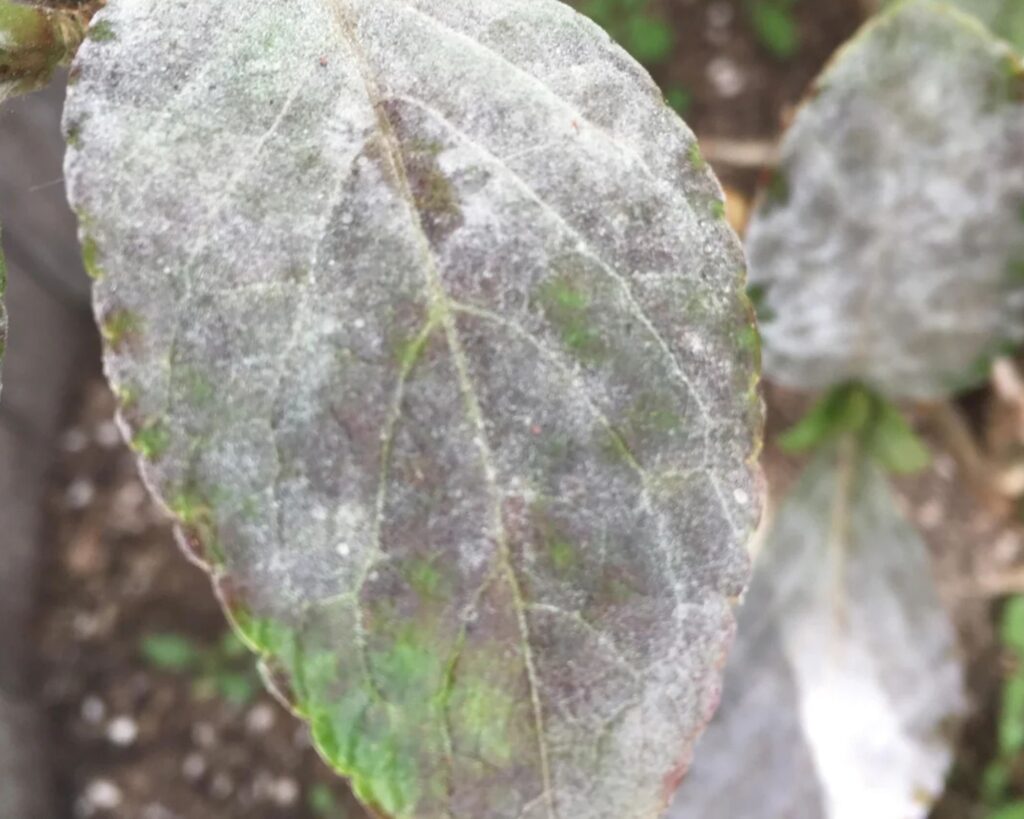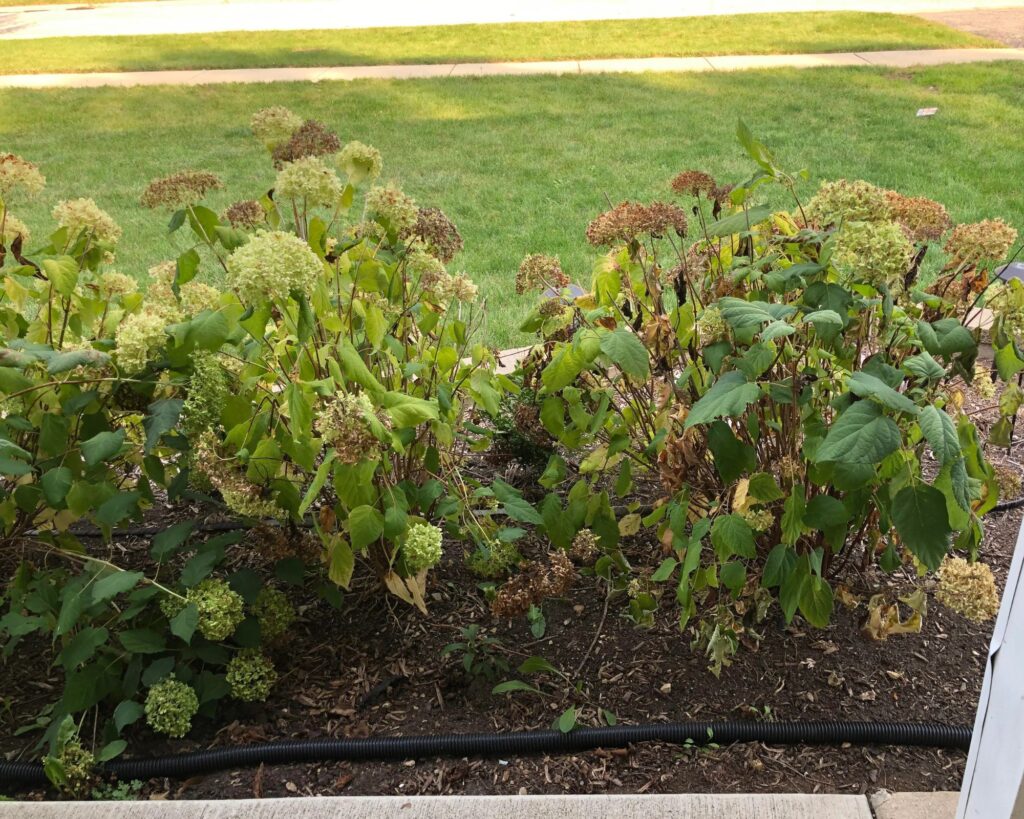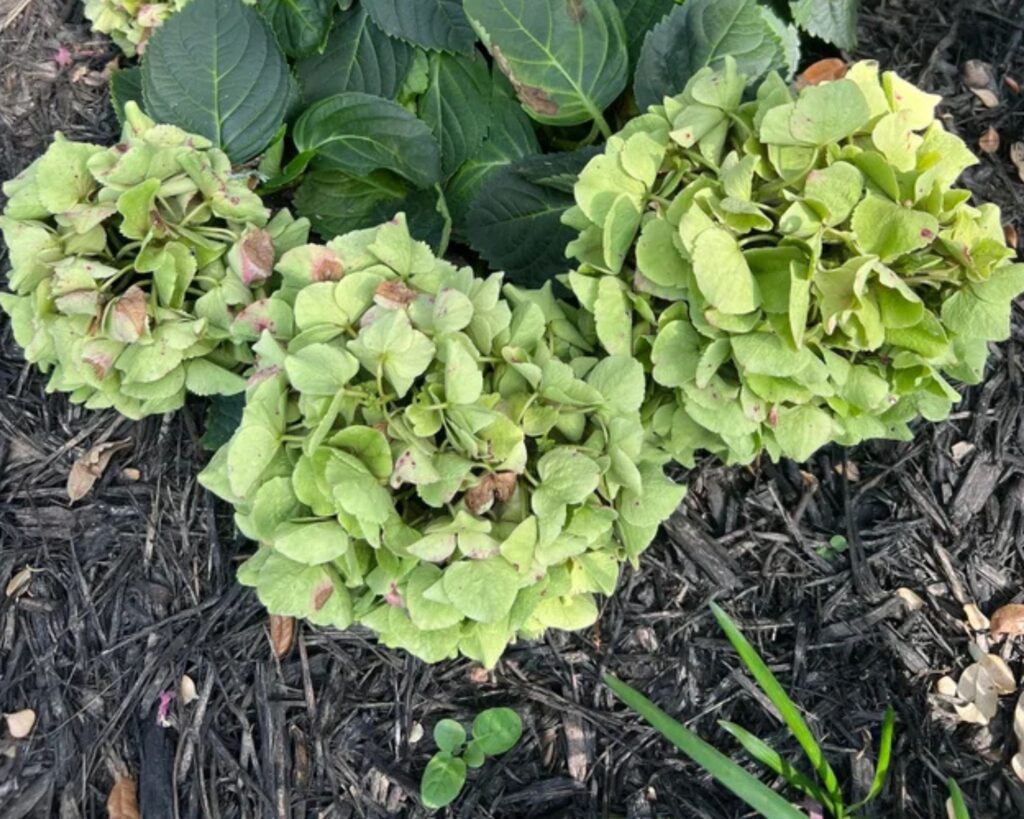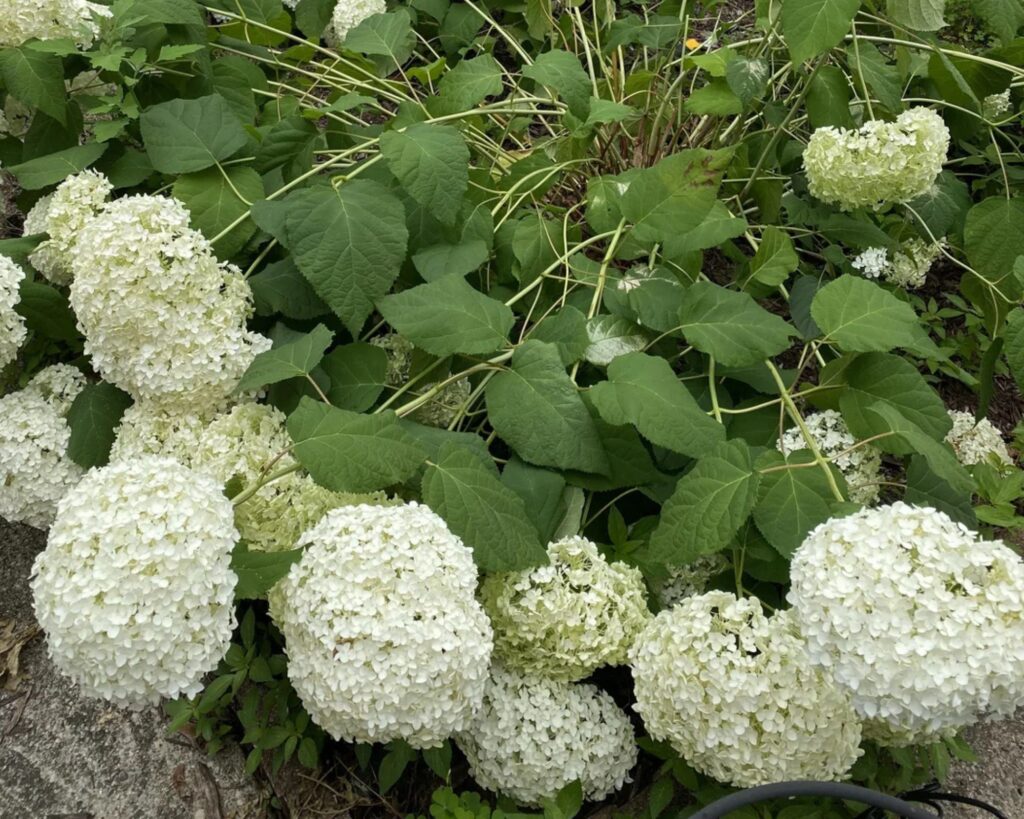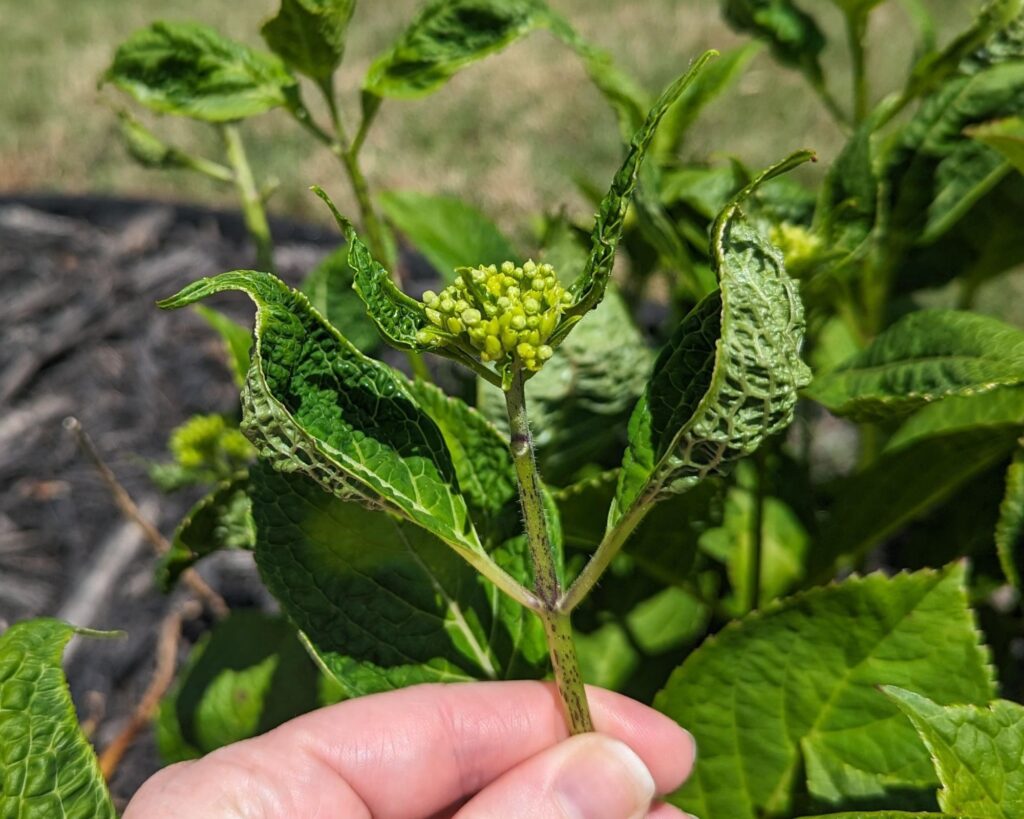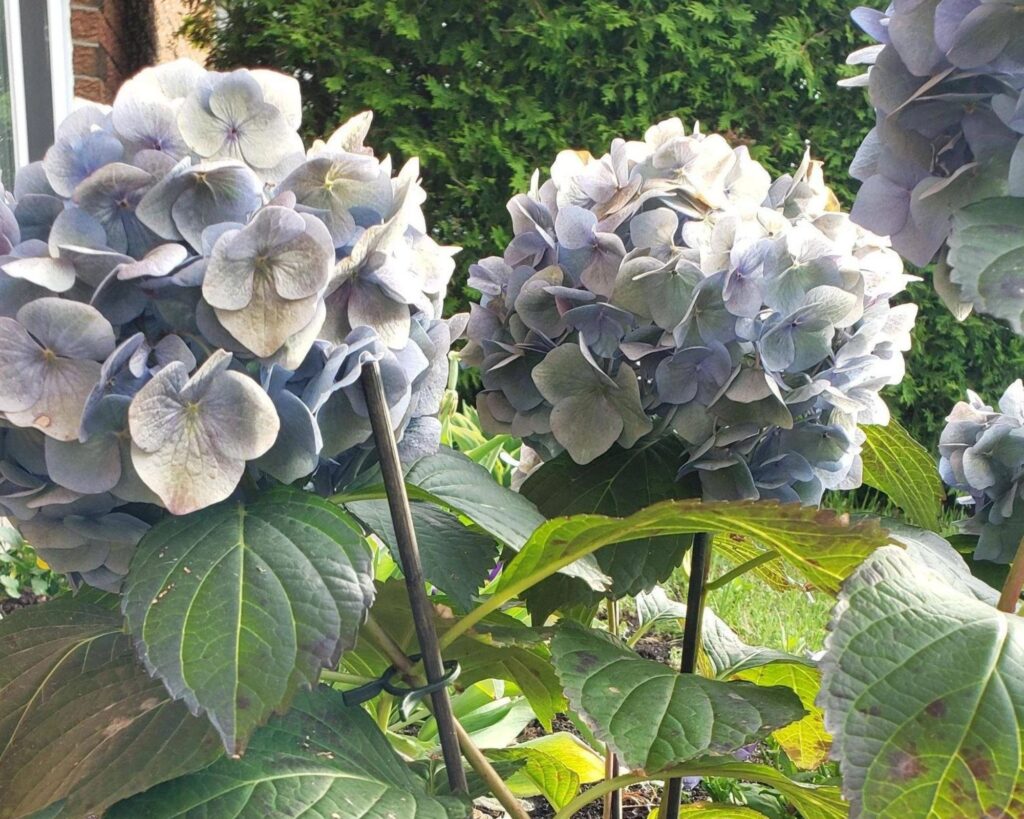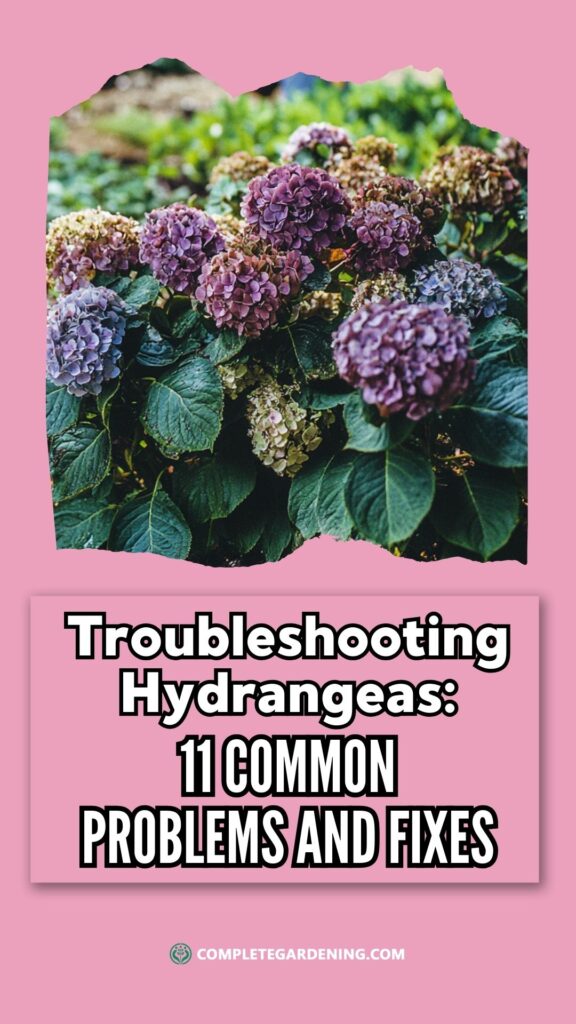Hydrangeas, with their breathtaking blooms and ability to flourish in diverse garden settings, are the crown jewels of many landscapes. Whether you’re drawn to the showy mopheads or the intricate lacecaps, these shrubs bring undeniable charm.
Yet, despite their beauty, hydrangeas often face challenges that can leave even the most experienced gardeners frustrated. From wilting leaves to stubborn non-bloomers, these problems can quickly dull your garden’s shine.
But don’t worry – recognizing these common issues and knowing how to tackle them will ensure your hydrangeas stay healthy and vibrant all season long.
In this post, we’ll dive into over ten frequent hydrangea problems and offer practical solutions to keep your garden flourishing.
1. Wilting Leaves and Flowers
Wilting is often one of the first signs something is amiss with your hydrangea. While it might seem like your plant is on its last legs, wilting is often reversible.
Causes:
- Underwatering: Hydrangeas are thirsty plants, especially in hot or dry conditions.
- Overwatering: Too much water can lead to root rot, depriving the plant of oxygen.
- Heat stress: Intense sunlight, especially midday, can cause temporary wilting.
Solutions:
- Water deeply at least once or twice a week, depending on the weather.
- Ensure the soil drains well to avoid waterlogged roots.
- Provide shade during the hottest part of the day if your hydrangea is in full sun.
2. No Blooms or Poor Flowering
One of the most disheartening problems for hydrangea growers is a plant that doesn’t bloom or produces lackluster flowers.
Causes:
- Improper pruning: Some hydrangea varieties, like bigleaf hydrangeas, bloom on old wood. Pruning them in late winter or spring may remove flower buds.
- Cold damage: Harsh winter temperatures can damage buds on hydrangeas that bloom on old wood.
- Too much nitrogen: High nitrogen fertilizers promote leaf growth but hinder flower production.
Solutions:
- Know your hydrangea variety and prune accordingly. For old wood bloomers, prune after flowering.
- Mulch around your hydrangeas to insulate against cold and protect buds.
- Use a balanced fertilizer that promotes blooming, not just foliage growth.
3. Yellowing Leaves
Yellowing leaves can be caused by several factors, but it often indicates an issue with watering or nutrients.
Causes:
- Overwatering: Excessive water can suffocate roots, leading to yellowing leaves.
- Nutrient deficiencies: A lack of essential nutrients, especially nitrogen, can cause yellow leaves.
- Improper soil pH: Hydrangeas prefer slightly acidic soil. If the pH is too high (alkaline), it can limit nutrient uptake.
Solutions:
- Adjust your watering schedule to ensure you’re not overwatering.
- Test the soil and fertilize with a balanced, slow-release fertilizer if nutrient deficiencies are detected.
- Conduct a pH test, and if necessary, lower the pH by adding organic matter or sulfur.
4. Brown, Crispy Leaves
Seeing brown and crispy leaves can be alarming, especially if it spreads quickly through the plant.
Causes:
- Underwatering: Inadequate water supply, particularly during hot spells, can cause leaves to dry out.
- Sun scorch: Hydrangeas are sensitive to excessive sun, and too much direct exposure can burn the leaves.
- Fungal diseases: Sometimes, leaf scorch can be a result of fungal infections like anthracnose.
Solutions:
- Water your hydrangea regularly, especially in hot or dry weather, and mulch to retain moisture.
- Relocate or provide shade for your hydrangea if it’s receiving too much direct sunlight.
- Treat any fungal diseases with appropriate fungicides and remove affected leaves.
5. Powdery Mildew
This fungal disease is quite common on hydrangeas, especially in humid conditions, leaving a white, powdery substance on the leaves.
Causes:
- High humidity: Powdery mildew thrives in humid and damp environments, particularly when airflow around the plant is poor.
- Overcrowded plants: Hydrangeas that are planted too closely together or in an area with poor ventilation are more prone to mildew.
Solutions:
- Improve air circulation by spacing plants adequately and thinning out branches.
- Apply an organic fungicide or a homemade solution using baking soda to control mildew.
- Water at the base of the plant to avoid wetting the leaves.
6. Root Rot
Root rot is a serious issue that can kill your hydrangea if not addressed early. It is typically caused by a fungal infection that thrives in overly wet soil.
Causes:
- Poor drainage: Waterlogged soil is the primary cause of root rot, which prevents oxygen from reaching the roots.
- Overwatering: Consistently saturating the soil, especially in heavy clay, can lead to rot.
Solutions:
- Ensure your hydrangea is planted in well-draining soil, or amend it with organic matter like compost or perlite.
- Cut back on watering, especially in the rainy season, and improve drainage if necessary.
7. Leaves with Holes (Insect Damage)
Insects like aphids, spider mites, and slugs can munch on hydrangea leaves, leaving unsightly holes.
Causes:
- Aphids: These small, sap-sucking insects can quickly infest plants, causing stunted growth and leaf damage.
- Spider mites: These tiny pests leave behind speckled damage and can sometimes be hard to spot.
- Slugs and snails: These creatures are particularly problematic in moist, shaded environments.
Solutions:
- Spray aphids with a strong blast of water or use insecticidal soap.
- For spider mites, use horticultural oil or insecticidal soap to control the population.
- To deter slugs and snails, use barriers like crushed eggshells or diatomaceous earth around your plants.
8. Hydrangeas Turning Green
Hydrangea blooms are known for their vivid colors, but sometimes they can mysteriously turn green, especially toward the end of their blooming cycle.
Causes:
- Natural aging process: As blooms mature, some varieties naturally turn green.
- Soil conditions: Changes in soil pH or nutrient levels can cause flowers to shift in color.
- Temperature changes: Cool temperatures in the fall can trigger blooms to turn green.
Solutions:
- Accept that green blooms are often a natural part of the aging process.
- If you want to maintain vibrant color, adjust the soil pH with aluminum sulfate (for blue) or lime (for pink).
- Deadhead flowers once they start turning green to encourage fresh blooms.
9. Floppy Hydrangea Stems
Floppy stems can detract from the plant’s aesthetic and even lead to broken branches.
Causes:
- Heavy blooms: Large, water-laden blooms can weigh down stems, especially after rain.
- Weak stems: Over-fertilization with nitrogen can cause rapid, soft growth that is too weak to support heavy blooms.
- Poor staking: Lack of support can lead to floppiness, particularly in taller varieties.
Solutions:
- Use stakes or cages to support heavy branches and blooms.
- Avoid over-fertilizing with nitrogen-rich products.
- Consider pruning to reduce the size of blooms if they are too heavy for the plant to support.
10. Hydrangea Leaves Curling
Curling leaves can be a sign of stress, whether from pests, diseases, or environmental factors.
Causes:
- Heat stress: Hot, dry weather can cause leaves to curl as the plant tries to conserve moisture.
- Pests: Aphids, in particular, can cause leaves to curl as they feed.
- Disease: Some fungal infections can cause leaves to curl and distort.
Solutions:
- Water your hydrangeas more frequently during hot spells and add mulch to help retain moisture.
- Inspect for pests and treat with insecticidal soap or horticultural oil.
- Remove and discard infected leaves to prevent the spread of disease.
11. Hydrangeas Not Changing Color
One of the most exciting aspects of growing hydrangeas is the ability to change their bloom color. But sometimes, they stubbornly refuse to shift hues, leaving gardeners puzzled.
Causes:
- Soil pH: Bloom color in certain hydrangea species (like H. macrophylla) depends on soil pH. Blue flowers need acidic soil, while pink blooms need alkaline soil.
- Incorrect amendments: If you’re using the wrong soil amendments, your hydrangeas might not respond as expected.
Solutions:
- For blue blooms, amend the soil with aluminum sulfate or use a fertilizer for acid-loving plants.
- For pink blooms, add lime to raise the soil pH.
- Be patient, as color changes can take time – sometimes a season or two.
Hydrangeas are resilient plants, but they aren’t without their challenges. Whether you’re dealing with wilting leaves, no blooms, or common pest issues, most problems can be managed with a little knowledge and care.
By keeping an eye on your plant’s health and making small adjustments, you can enjoy lush, vibrant hydrangeas in your garden for years to come.
With this guide, you’re better equipped to tackle the most common hydrangea problems and keep your plants thriving.
